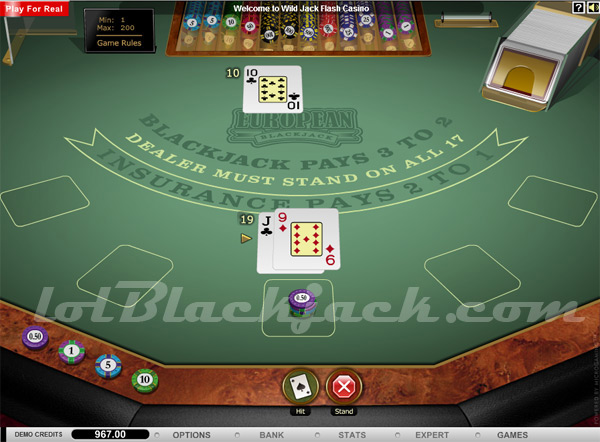The MIT Blackjack Team
The MIT blackjack team is probably the most famous group of professional players in the game of blackjack and the sport of card counting. This site would not be complete if we didn't write a little bit about them and what the true story was behind the famous blockbuster "21" movie. The idea behind the team would originate from Al Francesco, one of the original members of the Blackjack Hall of Fame inducted in 2002. Ken Uston is another huge name in the concept of blackjack teams like MIT. Most notably is his book "Million Dollar Blackjack" which was released not too long before the blackjack team was created. Two other famous books about the team are "Bringing Down the House" (which the movie "21" is based off of) and "Busting Vegas" by Ben Mezrich. If you enjoy learning about card counting and blackjack, there is an excellent TV show called "Breaking Vegas" on the History Channel as well.
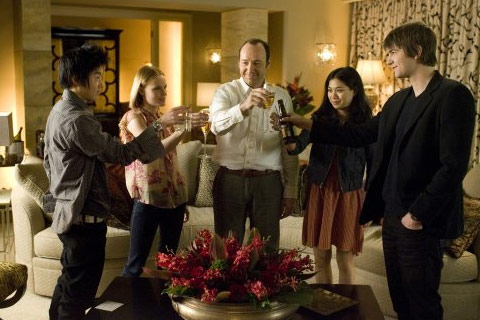
In Photo: MIT team from the Oscar winning movie "21"
How MIT Started the Blackjack Team - Early History
The team started in 1979 at the Massachusetts Institute of Technology and consisted of students and ex-students from this school along with some from Harvard University and their business school as well. It started off as a mini-course named "How to Gamble if You Must", which was a type of independent extracurricular "club" when class was not in session. Some students from the Burton-Conner Dorm decided to sign up and try it out. At first, they learned about poker and play micro-stakes poker games. Later on they began to learn how to play blackjack and how to count cards.
They trained and improved their skills at the campus itself and inside the classrooms, much the same way it was described in the movie in fact. The people who signed on were skilled in mathematics and statistics and usually students in these fields. As you may know, card counting and learning basic strategy is all about numbers and probabilities. Those who are good at math and statistics would have a much better chance of doing it right and actually enjoying the math in the game.
Atlantic City, which has many large casinos like Las Vegas, was the first stop for this group. They wanted to test out their new skills here. Unfortunately, they failed quite badly and the original group broke up. Later on, a gambler who goes by the name "Dave" proposed to form another team with J.P Massar, who was a graduate and also one of the people who organized the first trip out to Atlantic City. They wanted to take a great advantage of a special law in Atlantic City that allows card counters to play. Believe it or not, it is illegal to bar any card counters from playing at casinos in this city!
This new team consisted of 4 players with Dave. They also started off with a $5000 investment and this time they decided to go back to test their skills and were successful. Later on, new members started to join and they continued practicing the game during their own training sessions. They actually started getting on a roll and were winning on many weekends at the beginning but then that started to change. The students started to lose and lost some confidence in their abilities to beat the house. It was a mystery why they were doing so badly until they met up with Bill Kaplan.
Bill Kaplan, J.P. Massar and the new MIT blackjack team
The history of Kaplan is quite interesting. This is the man that actor Kevin Spacey, the professor, plays in the movie "21". He received his Bachelors Degree from Harvard in 1977 and was going to attend Harvard Business School for a Masters Degree. He had done a lot of research on card counting and blackjack before he graduated. Bill decided to delay entry into Harvard Business for one year in order to move to Las Vegas and start up his own team. The money he used was from funding he received from Harvard after his graduation but the rewards were staggering. He made a 35 fold return on his investment or won 35 times what he brought with him, in only 9 months!
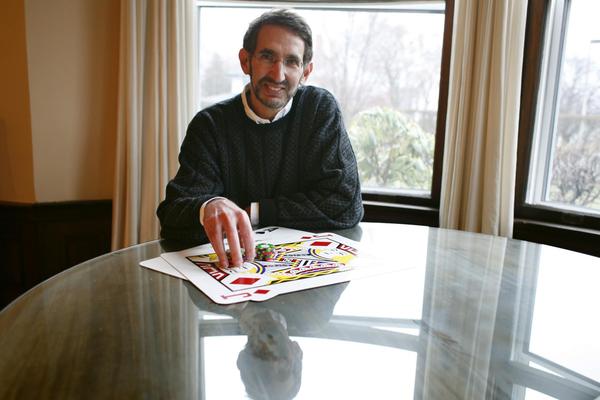
In Photo: Bill Kaplan as himself
Later on in 1978, he had to go to Harvard Business School while his team continued to play in Las Vegas for the next 2 years. In 1980, Kaplan graduated and the team was tired out from playing in Vegas so they decided to go international. The team broke up since Kaplan could no longer manage his team over such long distances. At around this time, J.P. Massar from the MIT team met Bill Kaplan at a Chinese Restaurant. Massar overheard Kaplan and his conversation about how successful he was. Massar then invited Kaplan to come with him to Atlantic City and to watch his team and figure out what the students were doing wrong and why.
It turns out that Massar's team was doing many things wrong. Each student was using a different card counting system, so they were essentially on the wrong page. Those systems were complicated, they were making errors, losing the count or even each student having inconsistent counts. It turns out that the students spent most of the time arguing about mathematical methods and equations rather than actually playing the game in the casino. Later on, Kaplan gave Massar his recommendations and report on the students.
The advantage that these players got on the blackjack table was stunning. Due to playing perfect basic strategy and coupling it with card counting, they could get a 2% edge over the casino. Normally the casinos have between 2% and 10% edge over the player, which ensures that the player will eventually lose in the long term. The card counters now have ensured that the casino loses in the long run and basically turns the casino into a personal ATM, literally. It has been known that the players would use other strategies such as tracking aces and advanced shuffle techniques and could even get an edge as high as 4% over the casino. This larger edge means they would win more money more often. It has been reported that even 5% to 10% edges against the casino were possible but it was extremely rare and required a perfect game with an awesome count. Basically it's the card counting aspect that turns your negative chance into positive chance winnings.
This new team was a boon for Kaplan. He could now train a new team of the students locally. This time Kaplan used a systematic and much more organized process for the students. Now everyone followed strict rules to use a single card counting system, a similar betting system and strict training. Players had to report information such as what systems they were using, what casino they were playing at and what times they played. They had to pass some requirements before even being able to play at the tables. It turns out that Kaplan's formal management strategies and business organization skills paid off and they became wildly successful.
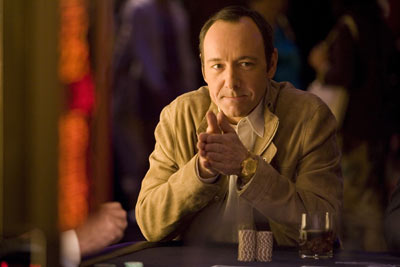
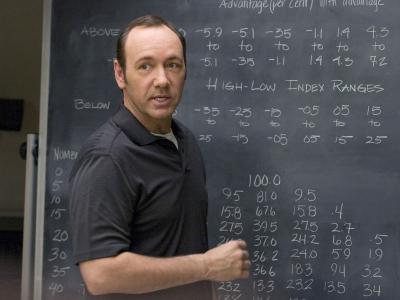
In Photos: Professor Micky Rosa from "21" movie
After about one ummer season since Kaplan met Massar, the first MIT blackjack bank was started. It was built up through investments by outside investors and the students themselves. There was about $89,000 initially and the MIT team consisted of 10 players along with Massar and Kaplan. They doubled the size of the bank in only 10 weeks and were highly successful. They theoretical figure for earnings was to make $170 per hour and the actual result ended up being about $163 per hour, which was very close to the ideal statistics. The winnings were split among the players and the investors in proportion to what they put into the bank and the investors were making a 250% return on investment! This was astronomical compared to 15% annually in the stock market, which in itself would be amazing.
MIT team history in the 1980s
1980 was the year when the MIT blackjack team really took off. By the time 1984 came around, there was about 30 players and had about $350,000 in money to play with. At about this time, Bill Kaplan had become notorious at casinos around the country. Casinos had people following him around and were looking out for the guy because of how much money he was taking from them. This made it impossible for him to be effective on the team and he decided to quit for awhile and go full time in the real estate business.
Occasionally he would play once in awhile and invest some money into the team but he was not active. The team after 1984 was generally run by Massar and a few of the newer members: John Change and Bill Rubin. Again, as time went on between 1985 and 1988, the team was struck with fatigue and "burn out" and eventually lost interest. By the end of the decade, the MIT teams played through 22 banks and 70 people were involved as team players.
Strategy and systems used in the 1990s
The team recruited players at the Massachusetts Institute of Technology by posters and flyers that were hung up around the campus. It was hard to get in and it took a lot of work, practice and skill. The training itself did not cost anything and it was almost like a hobby for many students. When they got good enough, they had somewhat of a final exam called the "trial by fire", which was an extremely difficult test of their skills before they would become full members. A player would have to play through 8 to 10 standard decks of cards (a large shoe) and play a perfect game as well as keeping the correct count. Even after this, they still had more training and played in real casinos with small money before finally being able to handle the big high-stakes blackjack.
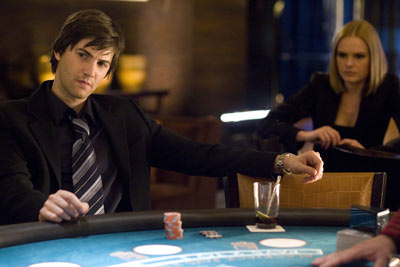
In Photo: Ben and Jill from the movie"21"
One notable student was John Chang, an undergraduate at the school who joined in 1982. Chang would eventually help run the team later on in the decade and into the 90's. In 1992, Kaplan, Massar and Chang made a huge move. They decided to take advantage of a new casino that was opening up nearby called Foxwoods Casino,located in Connecticut. Kaplan was able to raise a million dollars by forming a new team around "Strategic Investments", a Massachusetts Limited Partnership. Ironically, this was done through his knowledge of real estate investing. This marked the revival of the MIT blackjack team, addition of new members and training.
The team then spread across the country with members in many states along the East Coast, Midwest and the West Coast. Another notable player in the MIT team history was Sarah McCord a student who joined in 1983. In this new team, she was responsible for the all the recruiting and training that happened in the West Coast as she lived locally in California.
They started gambling all over the world at the same time and the casinos were taking some serious hits. They have never seen such a coordinated assault against the game of blackjack in so many areas at the same time. Some would say that this would be the golden age of the MIT blackjack team. Eventually the casino started fighting back by figuring out who the card counters were and banning them from playing there again but MIT kept hitting them even harder by sending new players with new faces to the casinos so when one player got banned, another "stranger" could come in and take their place. At one time, the team won nearly $500,000 during a single weekend in Las Vegas
Eventually the casinos caught on and had investigators find out that a large concentration of the caught players were from Cambridge. Then that tied in with MIT and they figured out where they were all coming from. As another tool to fight back, they took the yearbook and stored the pictures in a database at the casino to keep an eye on anyone who could be from MIT and make identification much easier.
This seemed to be the end of the team. Most of the best players on the team were not allowed into the casinos anymore. Also, they were not spending as much time working on their real estate business, which was actually much more profitable than blackjack anyways. On the last day of the year 1993, General Partners chose to close down Strategic Investments. Their limited partnership ended and the money was paid out to the players and investors of the team.
1994 - This was not the end of the MIT blackjack story
After the main MIT team broke up in 1993, a small group the MIT players decided to create their own independent teams. There were two notable teams. One was the Reptiles, run by Mike Aponte, Wes Atamian and Manlio Lopez. The other one was the the Amphibians, run by Semyon Dukach. They both sort of competed against each other to see which team won more money. Some say that each team won over a million dollars and had over 50 members at one time or another. One player from the Amphibians team actually won the secret Blackjack Ball tournament in its third year and was crowned the title "The Best Blackjack Player in the World" by Max Rubin, the famous host of the annual event. The winner's unofficial name was known as "Most Feared Man in the Casino Business".
Also See:

 US Players and Credit Card, BitCoin Deposits Accepted!
US Players and Credit Card, BitCoin Deposits Accepted!